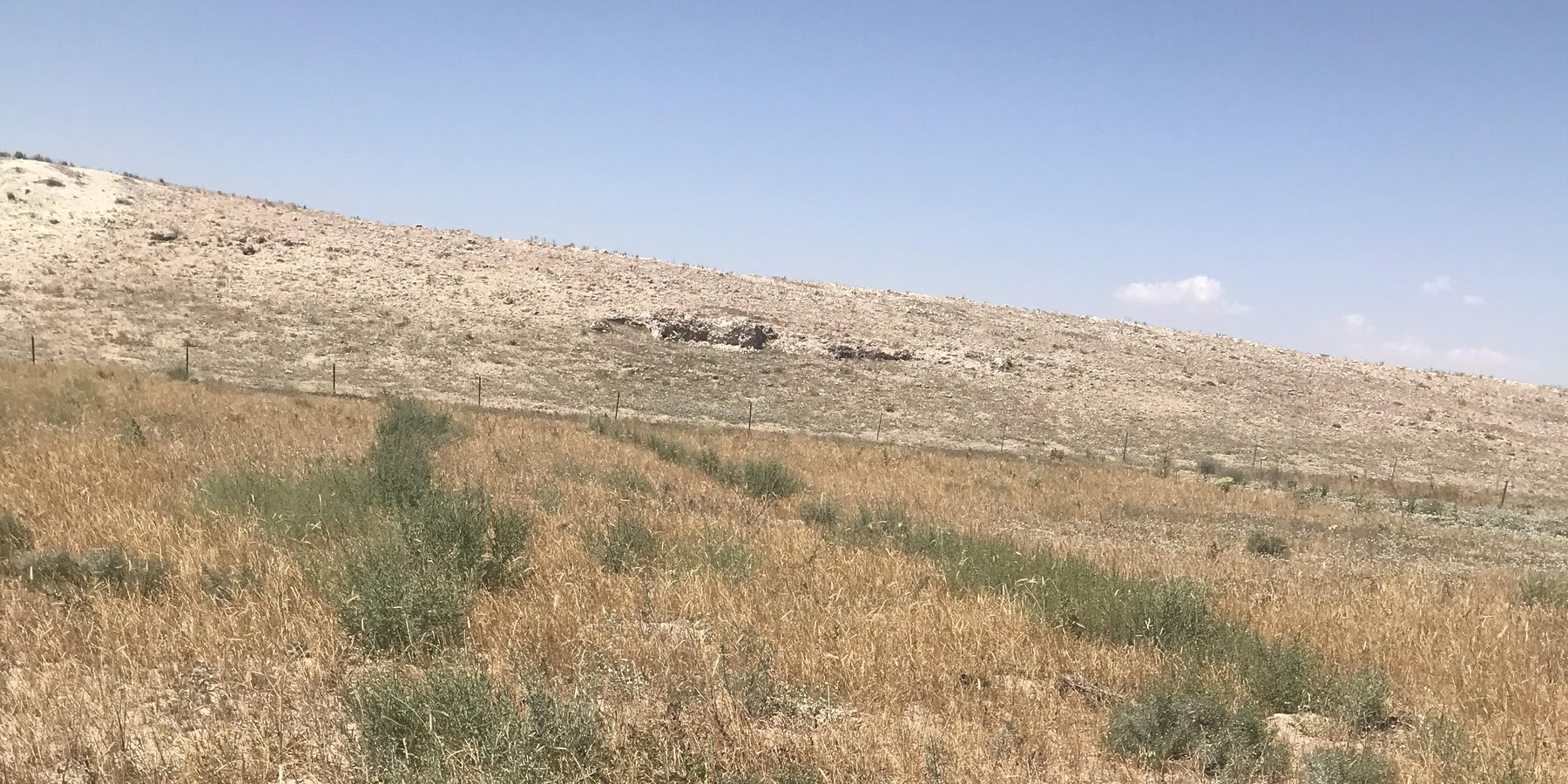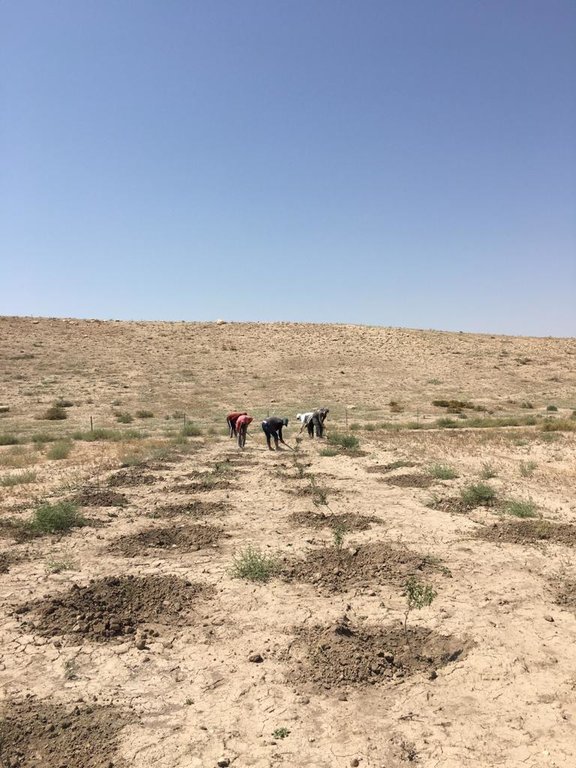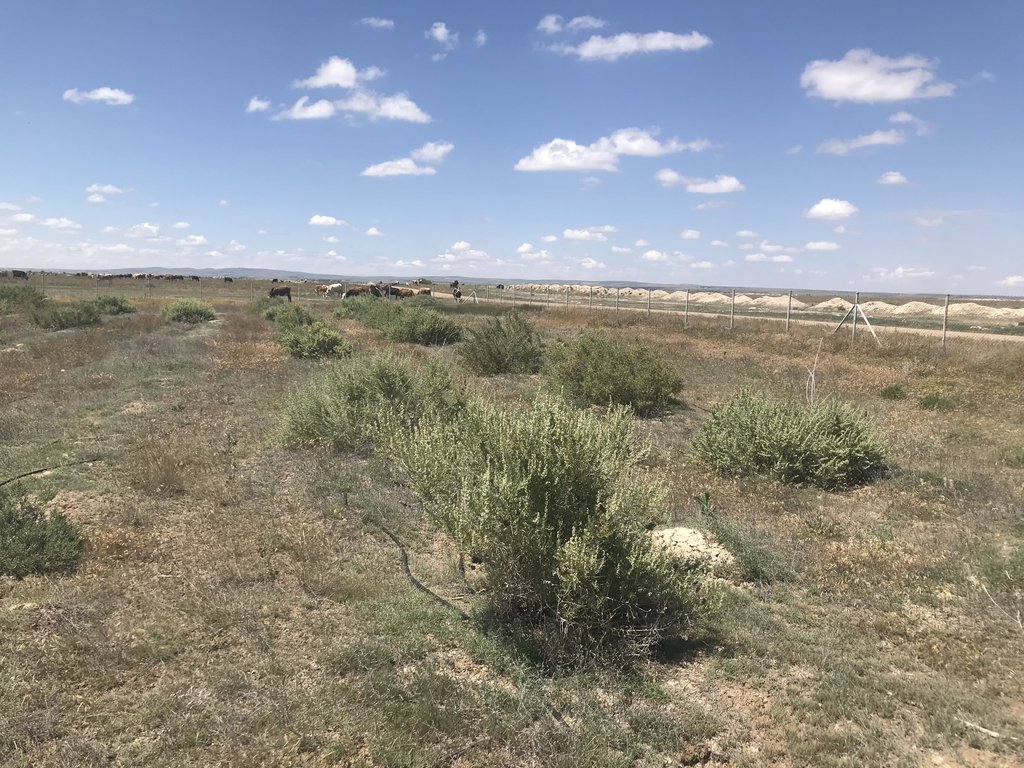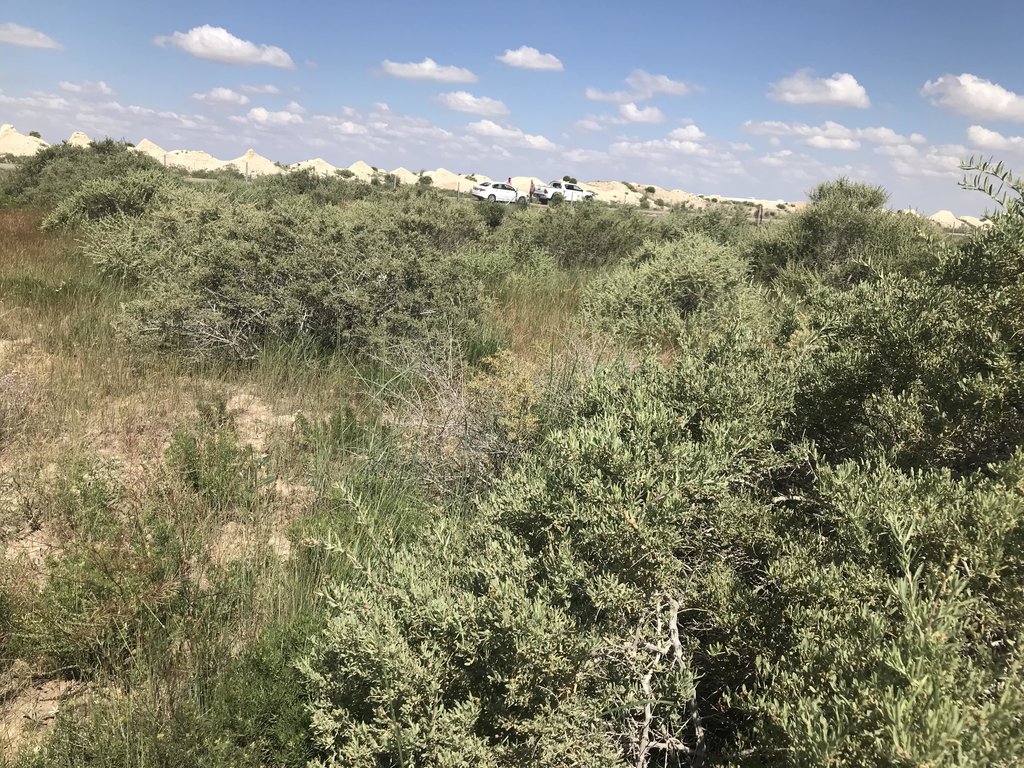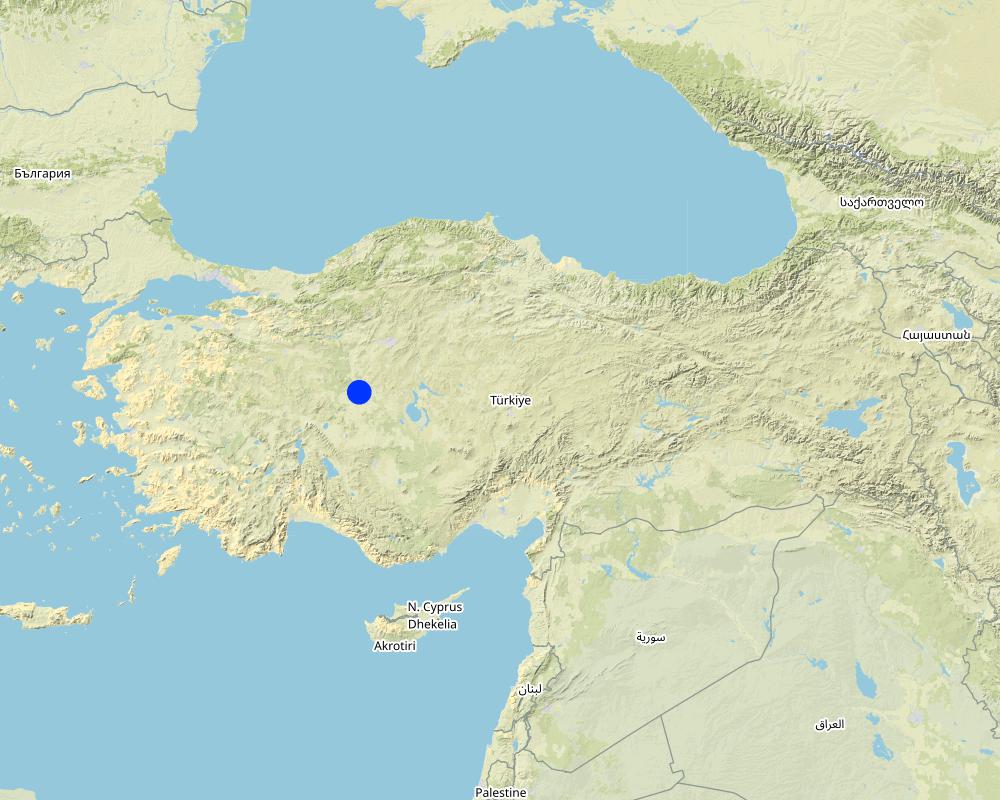Sustainable pasture improvement in the arid and semiarid lands of Turkiye [Turquie]
- Création :
- Mise à jour :
- Compilateur : Bilgi Sarihan
- Rédacteur : –
- Examinateurs : William Critchley, Rima Mekdaschi Studer
approaches_6321 - Turquie
Voir les sections
Développer tout Réduire tout1. Informations générales
1.2 Coordonnées des personnes-ressources et des institutions impliquées dans l'évaluation et la documentation de l'Approche
Nom du ou des institutions qui ont facilité la documentation/ l'évaluation de l'Approche (si pertinent)
General Directorate Combating Desertification and Erosion (General Directorate Combating Desertification and Erosion) - Turquie1.3 Conditions relatives à l'utilisation par WOCAT des données documentées
Quand les données ont-elles été compilées (sur le terrain)?
26/06/2021
Le compilateur et la(les) personne(s) ressource(s) acceptent les conditions relatives à l'utilisation par WOCAT des données documentées:
Oui
2. Description de l'Approche de GDT
2.1 Courte description de l'Approche
Natural pastures have insufficient capacity to produce forage in the semi-arid rangelands of Central Anatolian Region. Therefore, a project has been initiated to plant forage shrubs which are drought and salinity tolerant in order to rehabilitate these pasturelands.
2.2 Description détaillée de l'Approche
Description détaillée de l'Approche:
Approximately 65% of Turkiye’s surface area (78 million hectares in total) consists of arid and semiarid areas, and this is where most of the pasturelands are located. These areas are deprived of vegetation and under threat of wind erosion. In addition, salinity is a serious problem on approximately 2 million hectares. In recent years, the General Directorate of Combating Desertification and Erosion has been implementing projects to improve pasture quality in arid and salty areas by planting adapted shrubs. Natural pastures have insufficient capacity to produce forage sustainably. Droughts, which are increasingly felt with global warming and climate change, have further limited forage production, especially in Central Anatolian Region’s rangelands. A project was initiated in the dry, nutrient-poor and heavy soils land within the borders of Kırsehir (Malya) and Ankara (Polatli) Agricultural Operations Directorate. Forage shrubs and herbaceous plants which are resistant to drought and overgrazing were selected: namely Atriplex canescens, Kochia prostrata, Agropyron elongatum and Agropyron intermedium. Atriplex canescens is, in particular, drought tolerant and rapidly increases the yield of animal feed in degraded pastures. No chemical fertilizer was applied to this species, which was given limited water only for the first two years after planting. Despite this, the plants grew successfully. It is thought that the continuity of the pasture established in this approach is possible in most of the arid areas. The management of the improved field will be provided by planned grazing. One year, part of the pasture will be opened for grazing in one season, while other parts will be opened for grazing in the second year. In this way, land degradation of the area will be prevented. One of the primary goals of this project is to contribute to the improvement of degraded pasture's biomass productivity. The project also support efforts to prevent wind erosion. Under the project, adaptation to drought, growth and biomass of the planted and cultivated species are monitored, and their contribution to the regional livestock's feed source capacity and soil fertility are recorded. Above all, the approach will help to provide sustainable land improvement, especially where livestock keepers face challenges with drought.
2.3 Photos de l'approche
2.5 Pays/ région/ lieux où l'Approche a été appliquée
Pays:
Turquie
Région/ Etat/ Province:
The Central Anatolian Region
Map
×2.6 Dates de début et de fin de l'Approche
Si l'année précise est inconnue, indiquez approximativement quand l'Approche a démarré:
il y a moins de 10 ans (récemment)
2.7 Type d'Approche
- fondé sur un projet/ programme
2.8 Principaux objectifs de l'Approche
To summarize the objectives of the aproach:
- Creating wind protection strips by planting shrub species - that are adaptable to wind erosion, drought and barrenness, to protect the soil surface from wind erosion,
- Growing shrubs and herbaceous forage crops in the field in order to reduce the scarcity of feed resources in arid and semi-arid lands,
- Increase the income of the rural population from livestock keeping,
- Improve the soil health and soil physical quality in terms of providing important ecosystem services,
- Contribute to the transformation of arid and semi-arid areas into Carbon Sink Areas,
- Serve the objectives of Land Degradation Neutrality,
2.9 Conditions favorisant ou entravant la mise en œuvre de la(des) Technologie(s) appliquée(s) sous l'Approche
collaboration/ coordination des acteurs
- favorise
General Directorate Combating desertification and erosion collaborate with the General Directorate of Agricultural Operations and its all local departments. General Directorate Combating desertification and erosion also has collboration with the livestock keepers.
cadre juridique (régime foncier, droits d'utilisation des terres et de l'eau)
- favorise
The land ownership regime has helped the approach implementation. Project areas belong to state, so applying the project isn't a problem.
cadre politique
- favorise
Pasture laws support sustainable pasture management.
connaissances sur la GDT, accès aux supports techniques
- favorise
The project includes technical support of the General Directorate Combating desertification and erosion
charge de travail, disponibilité de la main-d'œuvre
- favorise
People who live in rural areas understand the importance of the pasture rehabilitation in terms of livestock, so they contribute with manpower.
3. Participation et rôles des parties prenantes impliquées dans l'Approche
3.1 Parties prenantes impliquées dans l'Approche et rôles
- exploitants locaux des terres / communautés locales
Local land users, rural population
Local land users provide technical support
- Spécialistes de la GDT/ conseillers agricoles
3.2 Participation des exploitants locaux des terres/ communautés locales aux différentes phases de l'Approche
| Participation des exploitants locaux des terres/ communautés locales | Spécifiez qui était impliqué et décrivez les activités | |
|---|---|---|
| initiation/ motivation | interactive | Meetings, seminars and others with the local land users |
| planification | interactive | Local land users (rural population) are included in the process of planning |
| mise en œuvre | interactive | |
| suivi/ évaluation | interactive |
3.4 Prises de décision pour la sélection de la Technologie/ des Technologies
Indiquez qui a décidé de la sélection de la Technologie/ des Technologies à mettre en œuvre:
- principalement les spécialistes de la GDT, après consultation des exploitants des terres
Spécifiez sur quelle base ont été prises les décisions:
- l'évaluation de connaissances bien documentées en matière de GDT (prises de décision fondées sur des preuves tangibles)?
4. Soutien technique, renforcement des capacités et gestion des connaissances
4.1 Renforcement des capacités/ formation
Une formation a-t-elle été dispensée aux exploitants des terres/ autres parties prenantes?
Oui
Spécifiez qui a été formé:
- exploitants des terres
- personnels/ conseillers de terrain
Formats de la formation:
- sur le tas
- réunions publiques
Thèmes abordés:
The Characteristics of Dry Land Ecology, Deficit Irrigation on Plants, Pasturelands in Arid and Semiarid Lands, improvement of biomass for livestock in pasture areas where located in dry lands...
4.2 Service de conseils
Les exploitants des terres ont-ils accès à un service de conseils?
Non
4.3 Renforcement des institutions (développement organisationnel)
Des institutions ont elles été mises en place ou renforcées par le biais de l'Approche?
- oui, modérément
Spécifiez à quel(s) niveau(x), ces institutions ont été renforcées ou mises en place:
- national
4.4 Suivi et évaluation
Le suivi et l'évaluation font ils partie de l'Approche? :
Oui
Commentaires:
The yields of forage plants are measured annually. Physical measurements (forage yield, forage quality, grazing capacity, soil quality) together with field photographs are used for measurement and evaluation. Sampling and measuring works are done by engineers. The evaluation part is discussed by the experts.
Si oui, ce document est-il destiné à être utilisé pour le suivi et l'évaluation?
Oui
Commentaires:
All documentation made on the field will be used for monitoring and evaluation. According to the results obtained, our study will be expanded to other arid areas.
4.5 Recherche
La recherche a-t-elle fait partie intégrante de l’Approche?
Oui
Spécifiez les thèmes:
- écologie
Donnez plus de détails et indiquez qui a mené ces recherches:
The General Directorate of Combating Desertification and Erosion and Agricultural Enterprises carry out the research together. In addition, the faculties of agriculture of the relevant universities are included in the research. It is thought that the research will contribute to both other agricultural workers and the next generation of scientists.
5. Financement et soutien matériel externe
5.1 Budget annuel de la composante GDT de l'Approche
Si le budget annuel précis n'est pas connu, indiquez une fourchette:
- 10 000-100 000
5.2 Soutiens financiers/ matériels fournis aux exploitants des terres
Les exploitants des terres ont-ils reçu un soutien financier/ matériel pour la mise en œuvre de la Technologie/ des Technologies?
Non
5.4 Crédits
Des crédits ont-ils été alloués à travers l'Approche pour les activités de GDT?
Non
5.5 Autres incitations ou instruments
D'autres incitations ou instruments ont-ils été utilisés pour promouvoir la mise en œuvre des Technologies de GDT?
Non
6. Analyses d'impact et conclusions
6.1 Impacts de l'Approche
Est-ce que l'Approche a aidé les exploitants des terres à mettre en œuvre et entretenir les Technologies de GDT?
- Non
- Oui, un peu
- Oui, modérément
- Oui, beaucoup
Pasture improvement through planting the drought tolerant shrubs is understood by land users.
6.2 Principale motivation des exploitants des terres pour mettre en œuvre la GDT
- augmenter la production
- augmenter la rentabilité/ bénéfice, rapport coûts-bénéfices
- réduire la dégradation des terres
- réduire les risques de catastrophe
- conscience environnementale
- améliorer les connaissances et compétences en GDT
6.3 Durabilité des activités de l'Approche
Les exploitants des terres peuvent-ils poursuivre ce qui a été mis en œuvre par le biais de l'Approche (sans soutien extérieur)?
- incertain
Si non ou incertain, spécifiez et commentez:
Since land users are new to this type of study, they may not be able to implement this study alone at this time. However, in the next few years, land users will also have the knowledge and skills to practice on their own. For example, controlled grazing is required for the plants in the pasture area to maintain their development. The studies, which started with understanding the importance of controlled grazing and the characteristics of arid areas, will continue with plant production and application works.
6.4 Points forts/ avantages de l'Approche
| Points forts/ avantages/ possibilités du point de vue de l'exploitant des terres |
|---|
| Land users consider the approach applied to be very beneficial and sustainable. The first reason is that the applied species can grow in extreme droughts because their water requirements are very low. The second reason is that the applied plants can be used as animal feed. |
6.5 Faiblesses/ inconvénients de l'Approche et moyens de les surmonter
| Faiblesses/ inconvénients/ risques du point de vue de l’exploitant des terres | Comment peuvent-ils être surmontés? |
|---|---|
| Although land users consider the approach to be very beneficial and sustainable, they suspect that shepherds will deviate from the proposed grazing plan. Another issue is that the lands are generally hard to reach and as a result of sudden changes in climatic conditions, it is thought that the plants may not stay in the area for many years. |
7. Références et liens
7.2 Références des publications disponibles
Titre, auteur, année, ISBN:
Bilgi Sarihan (bilgi.sarihan@csb.gov.tr)
7.3 Liens vers les informations pertinentes disponibles en ligne
URL:
https://qcat.wocat.net/en/wocat/approaches/edit/approaches_6321/app__7/
Liens et modules
Développer tout Réduire toutLiens
Aucun lien
Modules
Aucun module trouvé


